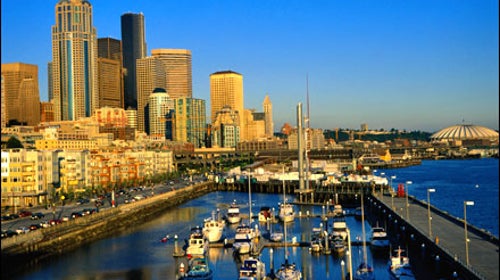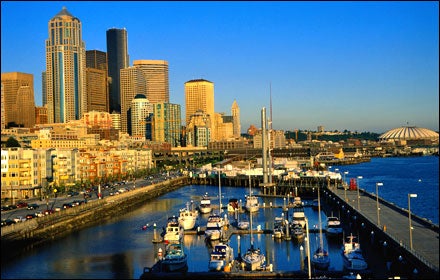Progressive Candidates
Get the scoop on each of this year’s Best Towns. Plus, check out our interactive map with archives of past years’ Best Towns.
��
Washington, District of Columbia
��
Washington, D.C.
Mid-Atlantic
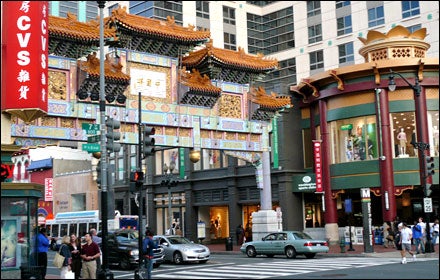
THE STATS
Pop. 581,500Median age: 35
Med. household income: $51,900
Med. home value: $437,700
Avg. commute: 29 mins.Largest employers (metro): Federal government, Lockheed Martin, Northrop Grumman, SAIC, Inova Health, U. of Maryland
Read more on
THE REVIVAL: High crime, buttoned-up Beltway vibe, sweltering summers, a coked-out mayor, taxation without representation, and eight years of an unpopular administration aren’t great for a city’s image, but don’t let all that stuff fool you. D.C. has been busily working for change lately.
��
After Marion Barry made a mess of the mayor’s office, Congress exercised its right to rule and took charge in 1995. When the D.C. regained control, in 2001, the money started pouring in, jump-starting a civic revival overdue since the race riots of 1968. Run-down neighborhoods northwest’s Adams Morgan, U Street, and Chinatown began attracting young entrepreneurs. “D.C. has seen an influx of independent business owners,” says Warren Brown, a lawyer turned baker who opened hugely popular on U Street in 2002. “Before that, it was like Where’s the creativity?'” In the Capitol Riverfront ‘hood, along the Anacostia River, the Nationals’ new baseball stadium debuted this spring as the first LEED-certified ballpark in the country. And this summer, D.C. launched the country’s first bike-share program, with a fleet of 100 four-speed cruisers; $40 gets you a year of access all over town.
THE LIFE: Just ask young, ultrafit D.C. mayor Adrian Fenty. The three-mile run along the National Mall, from Capitol Hill to the Lincoln Memorial, is, um, monumental. Off-road, 1,754-acre offers 40 miles of urban trails, or ride or run the in Georgetown. Upstream, offers Class V rapids. On U Street, chill with some vino at , then catch live jazz at .
THE WORD ON THE STREET: D.C.
“Don’t think D.C. is all about politics; it’s full of diversity, and practically any adventure you want is within a three-hour radius of the city.”
��
Chattanooga, TN
Southeast
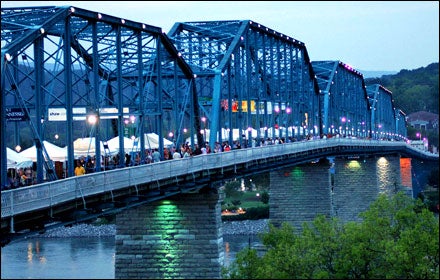
THE STATS
Pop. 151,900Median age: 38
Med. household income: $37,000
Med. home value: $119,900
Avg. commute: 19 mins.
Largest employers: BlueCross BlueShield of Tennessee, Hamilton Co. Dept. of Education, Erlanger Health, Tennessee Valley Authority, McKee Foods
Read more on .
THE REVIVAL: Chattanooga’s surrounded by mountains and rivers, but like so many manufacturing towns, it turned its back on its natural assets. In the mid-’60s, the city went from industrial boom to rusting bust when local steelmakers and foundries closed their doors, leaving a decrepit, nearly abandoned downtown and a community in dire need of an aesthetic and economic overhaul.
The Tennessee River flows through town, and urban renewal in the ’90s centered on a total do-over of the nearly nonexistent waterfront, including construction of an aquarium and ten-mile river walk; 2002 saw $120 million invested in, among other things, a pedestrian pier, free public boat slips, and the new Renaissance Park, on the . “That’s the Chattanooga way,” says forester Gene Hyde of the community-driven overhaul. The program will invest $2 million over three years to transform downtown condos, offices, and shops into LEED-certified buildings; the project recruits locals to plant some 2,000 trees in the urban forest; and there are plans to develop 100 miles of singletrack within ten miles of Chattanooga by 2010. All of which has remade downtown into a live/work/play crossroads with half a dozen parks, a new organic grocer, and the annual Riverbend music festival, which spans nine days and six stages.
THE LIFE: The much-revered Tennessee Wall serves up year-round trad climbing, and mountain bikers flock to Raccoon Mountain both just a few minutes from downtown. Chattanooga’s best carbo load comes compliments of , an all-day pancake joint in the up-and-coming North Shore district.
THE WORD ON THE STREET: CHATTANOOGA
“A very scenic, very happening, and very easy place to live, with unlimited options for climbing, caving, biking, hiking, and paddling.”
��
New Orleans, LA
You say you want a reconstruction? In the Big Easy, it's the regular folks, with help from a host of smart non-profits, who are resurrecting the city.
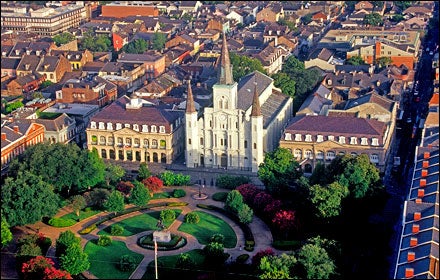
Hometown Hero
Harry Connick Jr. on the new New OrleansOUTSIDE: How did the Musicians’ Village come about?
CONNICK: Branford Marsalis and I were driving from New Orleans to the Houston Astrodome to visit some of the people there, and we started talking about what we could do. It’s turned out to be a great success, thankfully.
New Orleans musicians tend to be a pretty freewheeling, independent tribe. Why was it important to build a place for them to live together? To have a home. Most of these people were renting before. Now they own their own homes. It’s an incredible feeling. It’s a great place to be, so they’re pretty excited.
When you talk to folks in New Orleans about who’s rebuilding the city, they talk about you, Brad Pit…
Rocheblave Street, in New Orleans’s Broadmoor district, resounds with the squabbling of wild parakeets and the whine of power tools. It’s a Monday morning in late April in this recovering 2,400-home neighborhood, initially marked for demolition by the mayor’s rebuilding commission. The breeze is thick with the smell of fresh paint. The street is nearly shadowless, the Louisiana sun unbroken. This pronounced absence, open sky where the crowns of trees formerly reigned, is the reason arboricultural philanthropist Monique Pilié is down on hands and knees, preparing a hole for a lissome Japanese magnolia sapling, which sits in a pot nearby. With two volunteers from a team of 15 or so, she combs the black Delta soil clean of roofing tiles (deposited 32 months ago by Hurricane Katrina), then plants the tree in their stead. It’s roughly the 1,900th Pilié has put in the ground since the floodwaters subsided.
��
“We lost 70 percent of our tree canopy in the storm,” she says. “Well over 100,000 trees. I wanted to do something. I wanted to give back to my city.”
So she headed for high ground. A few months after the storm, in the winter of 2005, Pilié sold her house, quit her job, and began her Hike for KaTreeNa, a fundraising trek up the Appalachian Trail. Her plan was to return home and plant a tree for each mile that had passed under her boots: 2,175 of them. All told, Pilié has raised more than $100,000, and since October 2006, when she crossed the AT’s finish line and descended Maine’s Mount Katahdin, she’s been a storm herself, of sweat, dirt, and shovels. Every week, across the Crescent City, she plants 50 to 60 trees live oak, magnolia, and cypress saplings. All you need is a front yard. If her green thumb doesn’t blow out first, Pilié expects to hit her goal this fall, three or so years ahead of schedule. Then, well “I guess I’ll have to go back and walk the trail backwards.”
If people like Pilié keep at it, New Orleans’s new reputation as the nation’s capital of grassroots initiative and vigilante dogooderism may soon eclipse its renown for crime, poverty, and ill-considered toplessness. Nearly three years after the levees broke, it’s not the governments of Louisiana and the United States but the citizens, the volunteers still pouring in by the thousands every season, and a host of pathbreaking nonprofits that are re-creating New Orleans and, in the process, striving to make it a model 21st-century American city.
Crooner Harry Connick Jr. and saxophonist Branford Marsalis, both natives, dreamed up the soon-to-be-completed Musicians’ Village, a 72-home, Habitat for Humanity built community in the famously ravaged Lower Ninth Ward. It promises to bring many displaced jazz and blues artists back to this too-quiet town. “We wanted to do what we could to facilitate the continuation of traditional music in New Orleans,” Connick says. “I’d worked building houses with Habitat before Katrina, and after the storm the Musicians’ Village was a perfect opportunity to help get musicians into their own homes some of them for the first time in their lives and to do something for the city in a way that was close to my heart.”
Before the sandbags were even dry, L.A.-based eco-stewards Global Green moved in and began a number of ambitious projects. In collaboration with actor Brad Pitt (who’s since spun off with his Make It Right Foundation, a volunteer-and-donation-based initiative aimed at building hurricane-proof homes designed by leading architects), GG “adopted” the Holy Cross neighborhood in the Lower Ninth, where it’s undertaken a green housing development that would make Al Gore fall to his knees in ecstasy. Just this March, they completed the first house in the city to attain a LEED Platinum designation, a futuro shotgun with enough eco-gadgetry to render it carbon neutral and use zero net energy. Other projects include community education and grants for the greening of schools.
Speaking of New Orleans’s schools, heretofore among the most neglected in the nation: Uptown on Valence Street, at the Samuel J. Green Charter School a blighted junior high before the storm teacher Donna Cavato has paired with Alice Waters, of Berkeley’s Chez Panisse, to build a Louisiana version of the celebrity chef’s Edible Schoolyard program, a student-managed garden workshop. Here, inner-city kids (98 percent of whom live below the poverty line) learn organic agriculture, nutrition, seasonal foodways, and composting. A scant year and a half after breaking ground in the fall of 2006, ESY NOLA transformed a school that “looked like a prison,” as Cavato puts it, into an urban oasis. Five days a week, kindergarteners to eighth-graders gather for lessons under an airy pavilion and then, armed with trowels, mulch, and seeds, roll up their sleeves and go to work tending a cornucopia of native crops tomatoes, okra, satsuma trees, etc. where once lay an expanse of cracked concrete.
Here on Rocheblave Street, Pilié plants the last tree of the day, a leggy crape myrtle with pale green leaves. She heaps the dirt in a wide ring around the trunk to capture and retain moisture.”A levee,” she says.
“The good kind,” says a volunteer, dusting dark earth from her hands.
Then Pilié climbs into her pickup and rolls a few blocks over, to a construction site on South Tonti Street. Under the mild spring sun, with the help of Home & Garden TV and nonprofit carpentry corps Rebuilding Together, a crew of paint-stained volunteers is welcoming a family of nine back into a house they left under seven feet of water.
Pilié chats with Hal Roark, a resident who’s been helping oversee the Broadmoor district’s revival. “They were going to bulldoze this place, all these homes,” says Roark. “We said, Screw you. We’ll bring it back ourselves.’ ” He gazes with pride at the porch roof, where a volunteer, brush in hand, is slathering an optimistic shade of sky blue on a gable. “Almost three years later, we’re not waiting for the government,” Roark says. “When the government fails, this is the kind of thing you have to do. You have to be the cavalry you want to see coming over the hill.”
��
Ogden, UT
Mountain West
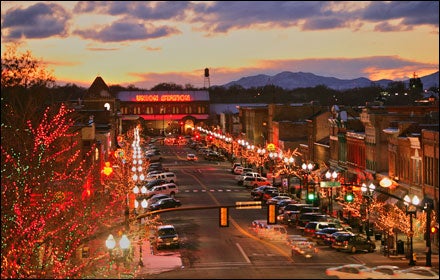
THE STATS
Pop. 81,000Median age: 29
Med. household income: $36,500
Med. home value: $114,700
Avg. commute: 22 mins.
Largest employers: IRS, McKay-Dee Hospital, Weber School District, Autoliv, Weber State U.
Read more on .
THE REVIVAL: A hundred years ago, this Utah outpost 45 minutes north of , in the foothills of the Wasatch was a hopping railroad junction. But after the diesel engine and I-15 came through, in the ’50s and ’60s, Ogden faded into anonymity as a blue-collar manufacturing burg with gobs of overlooked natural assets.
��
Soon after 38-year-old mayor Matthew Godfrey took office, in 2000, he hatched a mad plan: Transform Ogden into the adventure-sports capital of America. “Boulder pales in comparison to what we have,” says Godfrey, who took an “If you build it, they will come” approach and green-lighted the construction of two kayak parks (the Class III IV Ogden and Weber rivers flow through town); a paved trail network; and a rec center complete with climbing wall, vertical wind tunnel, and standing surf wave. Soon after, ski-brand giant Amer moved its HQ to town, along with 20 other outdoor-gear makers. Next up: a year-round, holographic ice tower (the brainchild of climbing legend and Ogden native Jeff Lowe), aquatic centers, and a velodrome. For now, Ogden is unpretentious and adrenalinized. And, unlike in Boulder, you can still nab a midcentury brick bungalow right in town for less than 200 grand.
THE LIFE: When more than nine inches of snow hits the mountains, Ogden rings the “powder bell” and locals hightail it to uncrowded , 20 minutes away. Come summer, mountain bikers hammer the Shoreline Trail’s 20 miles of foothill singletrack. The ‘s café/bakery, on the Ogden River, is the rendezvous point for a.m. caffeine and weekend rides.
THE WORD ON THE STREET: OGDEN
“Don’t tell too many people about it.”
��
Portsmouth, NH
Northeast
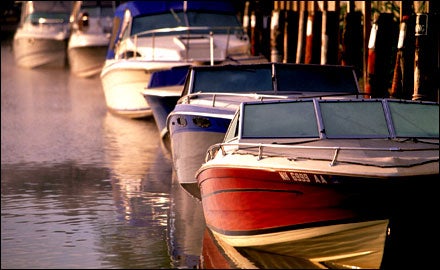
THE STATS
Pop. 20,600Median age: 38.5
Med. household income: $45,200
Med. home value: $318,000
Avg. commute: 22 mins.
Largest employers: Liberty Mutual, Portsmouth Regional Hospital, City of Portsmouth, Lonza Biologics, Demoulas Market Basket
Read more on .
THE REVIVAL: A shipbuilding center in the 18th century, this Piscataqua River town, just upstream from the coast, lost its best customer (the British) after the War of 1812, and its historic waterfront quickly turned Skid Row. In the ’70s, urban planners threatened to raze the place, but preservationists blocked the wrecking ball.
��
Are cobblestone streets and tchotchkes still de rigueur? Sure, but Portsmouth is now an unexpectedly hip town with a decidedly DIY vibe. “Some things have stayed the same, but plenty has changed,” says historian J. Dennis Robinson of the city’s old-and-new vibe. These days, this compact, walkable city an hour from both Boston and Portland has become a magnet for emerging musicians and artists with eight indie theaters, including the renovated (circa 1878), half a dozen galleries, a film fest, a slow-food movement, and live music seven nights a week at the and other hole-in-the-wall clubs. (When the alternative newsweekly invited local bands to record albums, it got 165 submissions.) Homegrown creative startups like Hatchling, a boutique animation firm, and the , a warren of artists’ studios, have taken over downtown’s brick warehouses. And, thanks to the and microbreweries, even the beer is locally crafted.
THE LIFE: In June, New Hampshire became the first state to mark its (admittedly small) portion of the , a 3,000-mile multi-use trail that runs parallel to the coast from Maine to Florida. For pretty reliable waves, try the sandy beach breaks at Jenness Beach or the Wall, about five miles south of town on Route 1A. For the best fresh seafood, head to .
THE WORD ON THE STREET: PORTSMOUTH
“We have the best of both worlds, no matter the season. Enjoy the water, or drive an hour to the White Mountains or Boston.”
��
Tacoma, WA
West
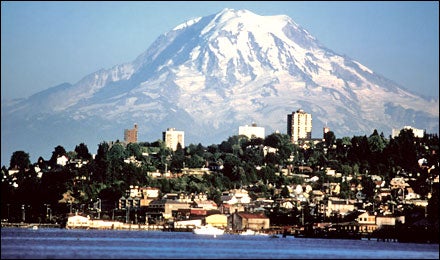
THE STATS
Pop. 199,700Median age: 36
Med. household income: $44,300
Med. home value: $228,300
Avg. commute: 24 mins.
Largest employers (county): Fort Lewis, Tacoma Public Schools, McChord Air Force Base, State of Washington, MultiCare Health
Read more on .
THE REVIVAL: Except for a brief heyday in the 1880s, when the Northern Pacific Railroad was completed and “the City of Destiny” became its western terminus, this port has been overshadowed by Seattle, 30 miles north. In the 1980s, trains stopped running to Union Station, and Tacoma’s business district became a dead zone
��
But nothing breathes new life into an inner-city ghost town like a couple thousand college kids. In 1990, the University of Washington opened its Tacoma campus, on Pacific Avenue, and Union Station was resurrected as a federal courthouse. Plus, with the renovation of a number of 1920s-era vaudeville theaters and the construction of several new museums, Tacoma’s now known as a vibrant arts center. The city’s 2006 cleanup of the , once a toxic Superfund site, prompted a major rethink of the languishing Commencement Bay waterfront. “Our vision is to increase urban density while respecting the natural space,” says the city council’s Marilyn Strickland. “We’ve tapped only about one-tenth of its potential.” An $84 million initiative will expand an already extensive parks system, which includes 702-acre Point Defiance. With 15 miles of trails, a kayak launch, and squid jigging off Tacoma Narrows, it’s one of the largest city parks in the country.
THE LIFE: On a clear day, ‘s snow cone looms, just 40 miles away, and it’s just 60 to the slopes of Crystal Mountain. Divers take the South Sound plunge at Titlow Beach, but kayaking Commencement Bay is the after-work adventure du jour. On Sixth Avenue, locals enjoy fresh oysters at and live music at .
THE WORD ON THE STREET: TACOMA
“Mount Rainier, a mild climate, Point Defiance Park, scuba diving, clean air, Commencement Bay, no state income tax “
��
Ithaca, NY
Northeast
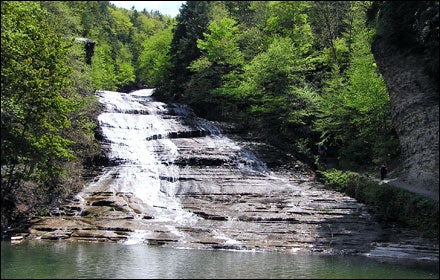
THE STATS
Pop. 30,000Median age: 22
Med. household income: $21,400
Med. home value: $183,500
Avg. commute: 14 mins.
Largest employers: Cornell U., Ithaca College, BorgWarner, Ithaca City School District, Cayuga Medical
Read more on .
THE REVIVAL: It’s not too hard to shine when you boast more than a little Ivy League intellect, but even this progressive, two-college town at the foot of upstate New York’s has had a run of bad luck. In the ’60s, the loss of small-scale manufacturing along the city’s Cayuga Lake waterfront sent Ithaca into prolonged stagnation.
��
Thankfully, with Cornell University and Ithaca College facing off above town, locals didn’t have to look far for creative solutions. Phase one: transforming two and a half blocks of downtown into the Commons, a mid-’70s version of Burlington’s and Boulder’s trendy walking malls. Things got crunchier in 1996, when the country’s largest , a 60-home sustainable community with two organic farms, opened outside of town. The pace of change has only escalated in the past ten years, with a much-needed spiffing up along Cayuga’s shores. Two miles of paved waterfront trail have already been finished, with four more to go, and local visionary Mack Travis and his son, Frost, are cleaning up and transforming the Ithaca Gun factory (a crumbling brick structure with a lead-contaminated field next to 150-foot Ithaca Falls) into condos. Downtown, the old Woolworth building is now the library, an abandoned printing plant is now live/work, and the EcoVillage is adding another 30 homes.
THE LIFE: Locals cycle centuries around Cayuga, trail-run portions of the 562-mile Finger Lakes Trail, and hike to Lucifer Falls, in nearby . The legendarily veggie has been a Seneca Street landmark since 1973.
THE WORD ON THE STREET: ITHACA
“Where else in the U.S. does the Dalai Lama have a residence?”
��
Louisville, KY
Southeast
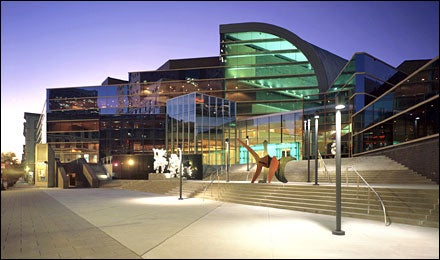
THE STATS
Pop. 701,500Median age: 39
Med. household income: $43,400
Med. home value: $141,600
Avg. commute: 21 mins.
Largest employers: UPS, Ford, Norton Healthcare, Humana, Jewish Hospital & St. Mary’s Healthcare, GE
Read more on .
THE REVIVAL: Louisville, a hub for higher education, horse culture, and bourbon distillation since the 19th century, never quite hit bottom. But this independent-minded, even-keeled city on the Ohio River it’s not quite the South, not quite the North, and not quite the Midwest took a turn for the worse in the ’70s and ’80s, when locals fled town for the ‘burbs and urban rot set in.
��
As luck would have it, though, back in the 1890s prescient city fathers hired landscape guru Frederick Law Olmsted’s firm to design more than 1,500 acres’ worth of urban parks. In 2005, longtime mayor Jerry Abramson announced ambitious plans to create 4,000 acres of new greenspace and link all city parks with a 100-mile walk-and-bike trail. To date, 23 miles of the Louisville Loop have been completed, winding through woodsy, historic neighborhoods dating back 150 years. The cyclist mayor has also added 40 miles of bike lanes to city streets and required that all new roads be built with designated lanes. Downtown is rebounding with a vengeance, fueled by a surge in the local logistics business UPS moved some of its operations here in the early ’80s, and in the past decade more than 100 other companies have followed and over $2.5 billion in new construction.
THE LIFE: , in the new , is the city’s hippest address, with contemporary art on the walls and 50 Kentucky-made bourbons on the menu. Located almostentirely within city limits who knew? 6,200-acre Jefferson Memorial Forest offers easy-access hiking, fishing, camping, and horseback trails.
THE WORD ON THE STREET: LOUISVILLE
“Big-city action, small-city price, hometown feel.”
��
Eureka, CA
West
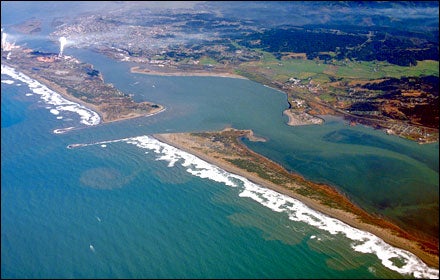
THE STATS
Pop. 27,000Median age: 37
Med. household income: $29,600
Med. home value: $262,250
Avg. commute: 15 mins.
Largest employers: City of Eureka, Schmidbauer BuildingSupply, SN Servicing, Costco, the Times-Standard
Read more on .
THE REVIVAL: Four hours north of , Humboldt County is home to half the world’s old-growth redwoods, so for much of its 155-year history, timber was king. With the remaining trees mostly off-limits, Eureka’s economy has been in dire need of diversification these past few decades.
��
Counterculture roots (wayward San Fran hippies have long found refuge here) and prime real estate on Humboldt Bay, however, have helped make Eureka an emerging NoCal arts capital. Last year saw the reopening of the 1920 Sweasey Theatre, in Old Town, a historic district dotted with hundred-year-old Victorians. Small independent businesses and boutiques that had fled for the malls in the seventies, depressing downtown in the process, are moving back. Long a haven for more traditional painters, Eureka’s gone mod in the past few years, with the opening of contemporary-art spaces like Accident Gallery, in an old warehouse/roller rink. A five-block boardwalk has breathed new life into the waterfront along Humboldt Bay, which still generates about two-thirds of the state’s oyster harvest and is kept clean by Humboldt Baykeeper.
THE LIFE: A bridge connects Old Town Eureka to Woodley Island, which shelters an egret rookery and has a marina that rents sea kayaks. When the harvests are bountiful, crabbers sell their catch right off the boat for $4 a pound. Head south 30 minutes to to mountain-bike or 20 minutes north to Trinidad to surf.
THE WORD ON THE STREET: EUREKA
“Great atmosphere, and you can travel from five to 30 minutes and be completely surrounded by wilderness.”
��
Crested Butte, CO
Mountain West
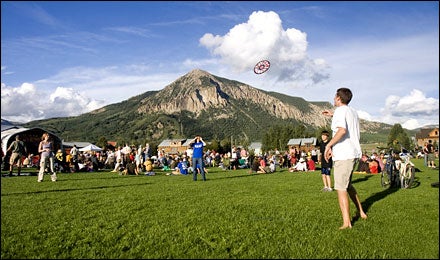
THE STATS
Pop. 1,600Median age: 31
Med. household income: $41,250
Med. home value: $301,100
Avg. commute: 10 mins.
Largest employer: Crested Butte Mountain Resort
Read more on .
THE REVIVAL: Crested Butte made its name as a coal town in the 1880s, then relaunched 80 years later as a ski bum’s nirvana. But thanks to inconsistent snowfall and a remote, road’s-endlocation at the foot of the West Elk Mountains, hard times came calling in the late ’80s.
��
The energy returned when the town’s eponymous ski resort changed hands in 2004. News of its imminent modernization triggered a real estate feeding frenzy, with dilapidated Victorians and miners’ shacks alike starting bidding wars. Now, with long-awaited upgrades under way at the ski area including a totally revamped base area, swank lodges, and the possible, controversial expansion to adjacent Snodgrass Mountain “Colorado’s last great ski town” is all abuzz. Once the holdout of elite athletes, former hippies, and powder dropouts, down-to-earth CB is attracting a new crop of young families and telecommuters looking for a laid-back and affordable alternative to glitzier counterparts like Telluride and Aspen. There’s a boutique bookbinderon Second Street, a new farmers’ market every Sunday in summer and fall, and a steady stream of locals on cruiser bikes.
THE LIFE: The ’80s saw a slow and steady proliferation of singletrack outside town, making the Butte a true trail-riding mecca. Even on a sleety night, you’ll see locals taking to the Lower Loop with snowsuited toddlers strapped in back, and half the town volunteers to maintain their beloved trails, like the legendary 401. Fly-fishing, hiking, and skiing are literally just out the back door.
THE WORD ON THE STREET: CRESTED BUTTE
“It’s a beautiful place, the skiing is sick, and the bike trails are sublime. A quirky community of wonderful people.”
��
��
Columbia, MO
Midwest
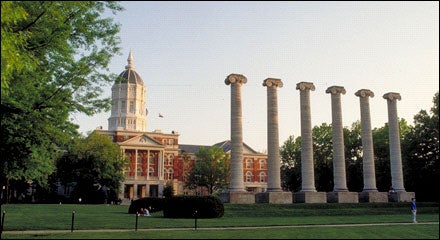
THE STATS
Pop. 92,900Median age: 28
Med. household income: $38,300
Med. home value: $164,700
Avg. commute: 15 mins.
Largest employers: U. of Missouri, Columbia Public Schools, Boone Hospital, City of Columbia, MBS Textbook Exchange
Read more on .
THE REVIVAL: Before the University of Missouri was established, in 1839, Columbia in the rolling foothills of the was just a stagecoach stop en route to California. As it grew, it became a hub for higher education (downtown boasts three colleges) and insurance firms but gained a rep as a staid, boring, and straitlaced community in need of a makeover.
��
Done. CoMo is swinging these days. In 2000, local filmmaker David Wilson, 33, helped open the , a small indie-film house downtown. Four years later, he co-founded , an annual documentary-film festival that draws international raves and is at the forefront of Columbia’s creative revival. Developers have retrofitted old meatpacking warehouses into SoHo-style lofts and art spaces. Nearby, you’ll find “the Diaper Factory,” which houses a dance troupe, artists’ studios, and a café. This summer, the 1928 Tiger Hotel will get a boutique facelift, complete with requisite mod eatery. Columbia recently scored a $22.5 million federal grant to develop a citywide trail system to add to its 65 urban parks, including 32-acre Capen Park, with its limestone top-rope routes.
THE LIFE: The nine-mile, run-or-ride MKT spur links downtown Columbia with the Katy Trail, a 225-mile rails-to-trails traverse that follows Lewis and Clark’s route along the Missouri River. Nearby Easley Hill is central Missouri’s toughest bike climb, and boaters float the mighty Missouri from Catfish Katy’s to Cooper’s Landing, 90 minutes downstream. Back in town, fresh-obsessed sources its ingredients from local farms and growers, and is the locals’ pick for pizza.
THE WORD ON THE STREET: COLUMBIA
“My stress level is half what it was on the East Coast, and so is my rent. Heaven for cyclists.”
��
The Rest of the Best
Here’s the scoop on the nine other towns that made our list this year
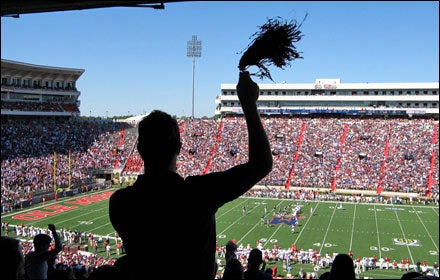
OXFORD, MISSISSIPPI (POP. 14,100)
In Oxford, bookish is beautiful. Despite Mississippi’s ranking last in high school graduation and among the highest in poverty, the town has developed into a cultural hub for the Deep South by taking full advantage of its local institution of higher education, Ole Miss, and by celebrating its unique literary history both William Faulkner and John Grisham have called Oxford home. The town taps into that history as much as possible, whether through the museum at Rowan Oak, Faulkner’s home, or with its famous , held each spring. Even the town’s mayor is in on the game he’s the owner of the independent bookstore anchoring the town square. And this fall, the Mississippi hamlet will take a national spotlight as it hosts the first general-election presidential debate expect an unfettered flow of ideas on the nation’s future. Just don’t be surprised if the best ones come from the Oxonians themselves.
OAKLAND, CALIFORNIA (POP. 397,000)
Want to curb urban sprawl, boost the economy, and reduce inner-city crime? Get people to move downtown. It worked for Jerry Brown. In 1999, Oakland’s then-mayor decided to direct more of the city’s focus on downtown Oakland through his 10K Housing Initiative, a plan to attract 10,000 new residents to the city center by streamlining the permit process and creating economic incentives for developers. The result? More than 10,000 housing units are in various stages of planning or completion far surpassing the original goal and the area is home to some 40 new restaurants, 15 new art galleries, and 18 new nightclubs. Even the skyline is different, thanks to a 20-story condo complex on Lake Merritt and a nearly completed 22-story high-rise on Grand Avenue. All this in a town that, according to Rand McNally, has the best weather in the country.
SACRAMENTO, CALIFORNIA (POP. 453,800)
Why transform only a section of the city when you can transform the entire region? That’s what Sacramento is hoping to do with its Railyards project, one of the largest urban-restoration initiatives in U.S. history. Once the terminus of the 1869 Transcontinental Railroad, downtown Sacramento has more recently been known as a terminal wasteland. Now the Railyards is offering the city a 240-acre blank slate of real estate to reenvision its future on. The plan calls for some 12,000 housing units, more than half a million square feet of retail space, a museum, plazas, a marketplace, and even a new rail center. It will take 20 years to complete, but when it’s finished it will nearly double the size of the downtown business district, bringing in an estimated $2.7 billion of business per year. Some of which has already arrived: Since 2007, 23 restaurants have opened downtown, along with 37 retail stores and a number of new hotels, including the Citizen, a 197-room boutique hotel, opening this fall, whose name was chosen by the citizens.
LEVITTOWN, NEW YORK (POP. 44,000)
American suburbs have always lacked originality, but the country’s first suburb, Levittown, 20 miles east of , is breaking the mold. , a unique partnership that exemplifies the best kind of civic harmony, has brought together the city government, a regional nonprofit, and local businesses to send canvassers door to door, explaining the benefits of going green (e.g., saving money) and then helping them do it. The changes range from simple like converting to compact fluorescent lightbulbs, 12,000 of which were given away to more ambitious, like replacing inefficient heating boilers. Homeowners are offered special low-interest loans to help pay for the upgrades, and businesses from a solar-panel manufacturer to a local appliance store offer their services at reduced rates. So far, more than 1,800 homeowners have signed on, and the goal is to reduce the city’s carbon emissions by 10 percent this year alone. It’s heartening proof that residents, businesses, and the environment can all win.
CORVALLIS, OREGON (POP. 49,800)
Corvallis is far from the undiscovered jewel it once was it’s within 90 minutes of world-class skiing, the Oregon coast, and blue-ribbon salmon fishing but in recent years the city has picked up verve from a new promenade on the Willamette River and a steady transition to renewable energy. In 2006, Corvallis became the second U.S. city (after Moab) to be named an EPA Green Power Community. Thanks in part to Pacific Power’s Blue Sky Program, 15 percent of power users from the city government to businesses to residences are participating in the purchase of renewables like wind and geothermal power. The green push began in 1997 as part of the town’s 20/20 Vision Statement, a blueprint guiding all aspects of the town’s growth until 2020. The new riverfront park, completed in 2002 as part of the vision statement, has helped attract more than a dozen new cafés, restaurants, and spas, proving that being farsighted isn’t so bad after all.
WILMINGTON, NORTH CAROLINA (POP. 95,900)
A famed railroad town and shipbuilding port during WWII, Wil-mington suffered mightily after the war effort ended. But Port City recaptured its past glory by turning to its port. The state’s ports authority purchased skyscraper-size cranes to handle cargo containers, and the cityinvested millions to preserve historic buildings along the waterfront. The efforts helped attract new businesses, diversify the economy, and make Wilmington one of America’s fastest-growing cities in the nineties. With nearby beaches along the Cape Fear coast, an ever-expanding Riverwalk, a National Register historic district comprising more than 230 blocks, and a renewed economy that has been fueled partly by an active filmmaking sector, “Wilmywood” has become much more than a shadow of its former self.
SEATTLE, WASHINGTON (POP. 582,500)
Want a green city? Elect a green mayor. Want a green planet? Elect Seattle’s mayor, Greg Nickels. Since taking office in 2001, Nickels has been at the forefront of fighting global warming, convincing more than 850 U.S. cities to sign on to his U.S. Conference of Mayors Climate Protection Agreement, which aims to meet or beat Kyoto Protocol target=s. Not surprisingly, Nickels is just as devoted to his own constituents, doing everything from installing hundreds of bike racks around the city to backing a $75 million renovation of iconic . As with his national agenda, it’s his green initiatives here that get the most attention, like bringing the city’s fleet of hybrid vehicles to 330 (plus the one Nickels traded his Town Car for), and his newest planet-saving brainstorm: placing a 20-cent “green fee” on all paper and plastic shopping bags, with the city providing free reusable bags for residents. For Seattleites, grassroots are great, but it also helps to have a good head on your shoulders.
CHARLOTTESVILLE, VIRGINIA (POP. 40,300)
Back in the ’70s, when Charlottesville’s now iconic downtown pedestrian mall was being constructed, three dozen willow oak and ash trees were planted along the central walkway. By the ’90s, the mature trees were paying off, drawing people downtown to the shady sidewalks. C-ville took notice and kicked off a management plan for its urban forests. This year the city is using GPS and satellite imagery to inventory the trees on all its public land and analyze the city’s tree canopy. The information will be used to balance out the natural environment within the urban surroundings, both for environmental benefits, like air quality and carbon sequestration, and for aesthetic appeal. To offset the urban-heat-island effect, the city has installed green roofs on city hall and the police station, with a goal of covering 40 percent of the city in green. Charlottesville is finally reaping the rewards of having planted a few key seeds.
BRATTLEBORO, VERMONT (POP. 11,700)
Even for dedicated locavores, the 100-mile diet is mostly an idealistic notion. But for the residents of Brattleboro, buying local is a way of life. The small town hosts one of the largest farmers’ markets in New England, with 50-odd regional vendors; is home to more than half a dozen Community Supported Agriculture, or CSA, farms, selling shares of everything from apples to pork; and has a local-food co-op that boasts more than 4,500 members, almost half the population. Nearly every store on Main Street is locally owned, stocks local products, or markets itself as fair trade. Brattleboro nonprofit Post Oil Solutions promotes community gardens for residents and organizes weeklong locavore challenges in which participants source all of their food from within the state. Farms sell starter kits for the event, restaurants serve special entrées, and residents even hold nightly potluck dinners. In Brattleboro, the best stuff is always just around the corner.
